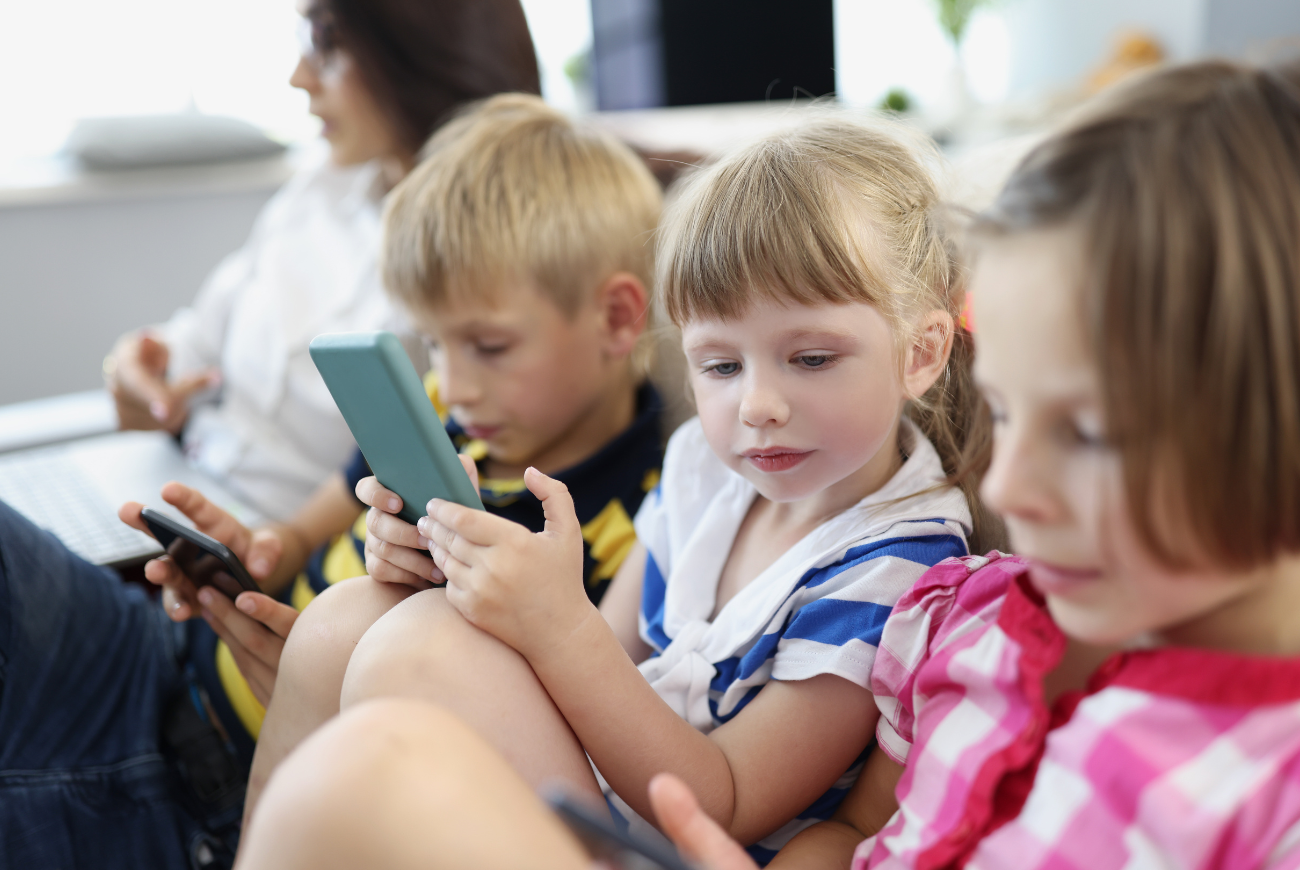How to Help Your Child Have a Healthy Relationship with Screens
7 min read
Last Modified 22 May 2025 First Added 30 October 2024

You can’t avoid screens nowadays, and it’s no different for children. As we live in a digital age, children will and should be exposed to screens, but it’s important that this is done in a healthy way. Developing healthy screen habits from a young age will help them to have healthy habits as an adult. Helping your child can also help you to reduce your screentime too!
Although you can’t avoid screentime, it’s important to be aware of the dangers of too much screentime for children. Just like with adults, being engaged in a screen can reduce engagement in their environment and what’s going on around them. But there are risks associated with too much screen time as well:

It’s important to remember that not all screen time is created equally. There is “passive” screentime and “active” screentime. Passive is simply watching something; active is where children are using screens to develop. If you allow your little one to have screen time, it’s important that they have access to appropriate screen uses. If you allow them active screen time appropriate to their age and for appropriate amounts of time, there are benefits to this:
The World Health Organisation (WHO) recommends the following screen time by age:
Remember, with the above guidance, all children are different, and not all screen time is equal. So, it’s important to find what works best for your child. It’s also important that you supervise any screen time and ensure parental controls are on.
If you do allow your little one screen time, it’s important that you keep an eye on not only their screen usage and what they are doing but also look out for signs of too much screen time. Some signs of too much screen time in children include:
Screen time can’t necessarily be completely avoided (but should for very young children) and can actually have benefits if used correctly and appropriately, but to ensure a healthy relationship with screens, managing your little one’s time using a screen is key. Ensure they are using screen time in a healthy way and that they don’t get too much screen time with the following tips:
As a family, set rules and boundaries around screen time. Allow your child to be involved with setting the boundaries, and ensure they understand why the boundaries are set to encourage them to follow the rules.
When setting boundaries, it’s important to ensure they meet the needs of each child. Base the rules around their interests and how screen time can complement what they do offline. For younger children, prioritise face-to-face interactions and apps that encourage play to support development.
You could set a screen schedule so that screens are only allowed at certain times. Use alarms and timers to ensure the times are adhered to.
Do you often find yourself checking your phone and so not giving full attention to the world around you? Chances are your child has noticed too. And children will mimic the behaviour of their parents or caregivers. Reducing your own screen time will have a big impact on your child’s screen habits.
When you want to set clear boundaries, it’s important you lead by example. When you play with them, put your phone somewhere so you won’t be tempted to check it, such as in another room. When you go to bed at night, don’t take your phone. Don’t get your phone out when you’re eating a meal at the table. All these little changes will help your child to follow by example and have a healthy relationship with screens in the future.
Although screens can be useful educational aids, that is all they should be: aids. You can still help them learn digital skills with our electronic toys range.
There are plenty of other ways children can and should learn. Encourage your little one to play with other age-appropriate educational toys, as well as general games. If you get involved and join in the play, it helps to engage your little one in screen-free play.
Having areas in the home that are screen-free will help your child develop a healthy relationship with screens and encourage improved family interactions.
Designate important family or health areas to be screen-free. Bedrooms, the table at mealtimes, etc., should be screen-free to encourage healthy habits.
An important part of managing screen time correctly is to ensure your little one is using appropriate screens. For instance, active screen time will always be better than passive. Also, ensure they are using age-appropriate apps and that parental controls are in place.
Another part of this is to ensure you enforce all the boundaries that have been set up. Also, avoid using a screen to settle your little one, as it won’t help in the long run. Instead, let them use appropriate devices at appropriate times.
When it comes to children and screen time, it’s important that they are introduced to the digital world in an age-appropriate way. It’s also important to prioritise active screen time rather than sedentary and passive.
Balance is key when your little one is introduced to screens. They are a fact of life nowadays, so they can’t be completely avoided. But if you help them to find the balance and encourage them to have screen-free play, you are setting them up to have healthy habits in the future. But it’s also important to remember that every child is different; some may find games on apps more useful than other educational games. So, find the correct balance for each child.
For more parenting tips and fun activities, head to our Childhood Adventures Blog.
Read our disclaimers.